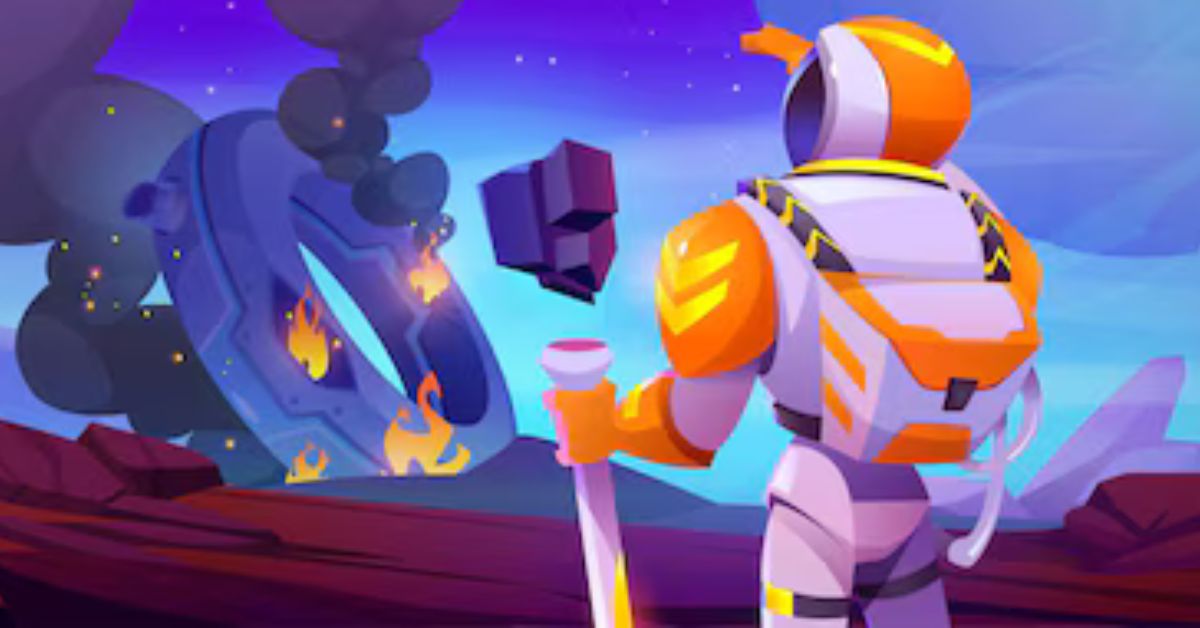Space Engineers, a sandbox game by Keen Software House, has captured the imagination of gamers worldwide. Among its contributors, Space Engineers Game by Christopher Demanski stands out for his unique input, adding layers of depth to this already intricate title. This article dives into the world of Space Engineers, its core mechanics, and Demanski’s contribution, exploring why it continues to resonate with players.
Introduction to Space Engineers Game by Christopher Demanski
Released in 2013, Space Engineers is a sandbox game that blends creativity, engineering, and exploration. The game offers a space-centric environment where players can build structures, craft vehicles, and explore celestial bodies. It emphasizes physics-based mechanics and engineering principles, creating an experience that is both educational and entertaining.
The game’s success lies in its intricate design and the freedom it provides to players. From constructing towering space stations to designing efficient mining rigs, Space Engineers Game by Christopher Demanski offers endless possibilities. The game allows single-player and multiplayer modes, enabling individuals and teams to collaborate or compete in a dynamic environment.
Space Engineers Game by Christopher DemanskiCore Gameplay Features
Space Engineers Game by Christopher Demanski is built on the idea of construction and survival in a space environment. Players can gather resources, build functional machines, and defend their creations. The game has two primary modes: Creative and Survival.
In Creative mode, players have unlimited resources, encouraging experimentation without constraints. This mode is perfect for testing designs or building large-scale projects. Survival mode, however, presents challenges such as resource management, hostile environments, and enemy threats, adding layers of strategy and urgency.
One of the standout features is its voxel-based engine, which allows players to deform, mine, and shape their surroundings. This realism is coupled with a sophisticated physics engine that governs the behavior of structures and vehicles, making it essential for players to consider factors like weight distribution and power consumption.
The Vision of Christopher Demanski
Christopher Demanski, a developer and gaming enthusiast, has been influential in shaping the gameplay dynamics of Space Engineers. His focus on realism and player engagement has made the game not just a sandbox of creative potential but also a robust simulation of engineering and physics in space.
Demanski’s contributions include refining the mechanics behind structural integrity, energy systems, and aerodynamics. By incorporating his insights, the game achieves a balance between creativity and realism. His work ensures that players must think like real engineers, solving problems and innovating to achieve their goals.
For instance, Demanski has worked on enhancing the realism of thruster mechanics. Players must now consider thrust-to-weight ratios, fuel efficiency, and power distribution when designing spacecraft. These additions have elevated the gameplay, making it more engaging and rewarding for those who enjoy solving complex challenges.
The Appeal of Space Engineers
What makes Space Engineers Game by Christopher Demanski stand out among other sandbox games is its commitment to realism without compromising on fun. The game has a steep learning curve, but this is part of its charm. Players who invest time in understanding its mechanics are rewarded with an experience that feels genuinely immersive.
The open-ended nature of the game attracts a diverse audience. Creative individuals can focus on building awe-inspiring structures, while strategic thinkers can delve into resource management and defense planning. Teams of players often work together, assigning roles to achieve larger goals, such as colonizing a planet or constructing a functional space fleet.
The inclusion of mods further amplifies the game’s appeal. The active modding community has introduced a plethora of new features, from additional building blocks to entire gameplay overhauls. Christopher Demanski’s support for modding has ensured that players can continuously expand their horizons within the game.
Real-World Applications of Space Engineers
Beyond its entertainment value, Space Engineers has educational potential. The game introduces players to engineering principles, physics, and problem-solving skills in an engaging manner. Many educators and parents have recognized its potential as a learning tool, encouraging students to think critically and creatively.
Christopher Demanski’s focus on realism has enhanced this aspect. By simulating real-world engineering challenges, the game teaches players the importance of planning, precision, and adaptability. These skills are valuable not just in gaming but also in academic and professional settings.
Challenges Faced During Development
The development of Space Engineers was not without its hurdles. Creating a physics engine that could handle the complexity of real-time structural deformations and space dynamics was a monumental task. Christopher Demanski played a crucial role in overcoming these challenges, ensuring that the game remained stable and enjoyable.
Balancing realism with accessibility was another significant challenge. While hardcore simulation enthusiasts appreciated the complexity, casual players found it intimidating. Demanski’s approach to simplifying certain mechanics without sacrificing depth has helped make the game more inclusive.
The game’s multiplayer mode also posed challenges. Synchronizing physics calculations across multiple players and ensuring smooth performance required innovative solutions. The team’s commitment to continuous updates and optimizations has been instrumental in addressing these issues.
Community Engagement and Longevity
The Space Engineers community is one of its strongest assets. Players from around the world share their creations, strategies, and experiences, fostering a vibrant ecosystem of collaboration and competition. Christopher Demanski’s active engagement with the community has been pivotal in maintaining this enthusiasm.
Regular updates and the inclusion of player feedback have kept the game fresh over the years. Events, competitions, and collaborations with content creators have further cemented its position as a beloved title in the gaming world.
The Future of Space Engineers
As technology advances, so too does the potential for Space Engineers. The development team, including Christopher Demanski, is exploring new ways to expand the game’s scope. Possible updates include more realistic planetary environments, advanced AI systems, and deeper resource management mechanics.
Virtual reality (VR) integration is another avenue being considered. Immersing players in the world of Space Engineers through VR would add a new layer of realism and engagement, allowing them to interact with their creations in unprecedented ways.
The game’s longevity is assured, thanks to its dedicated player base and the continuous efforts of its developers. With Christopher Demanski’s vision and expertise, Space Engineers is poised to remain a cornerstone of the sandbox gaming genre.
Conclusion
Space Engineers, guided by the contributions of Space Engineers Game by Christopher Demanski, is more than just a game. It is a platform for creativity, learning, and collaboration. Its blend of realism and imagination offers a unique experience that appeals to a broad audience, from casual gamers to engineering enthusiasts.
Demanski’s work has elevated the game, ensuring that every aspect feels polished and purposeful. As players continue to explore its vast universe, the legacy of Space Engineers will remain a testament to the power of innovation and dedication in game development.

